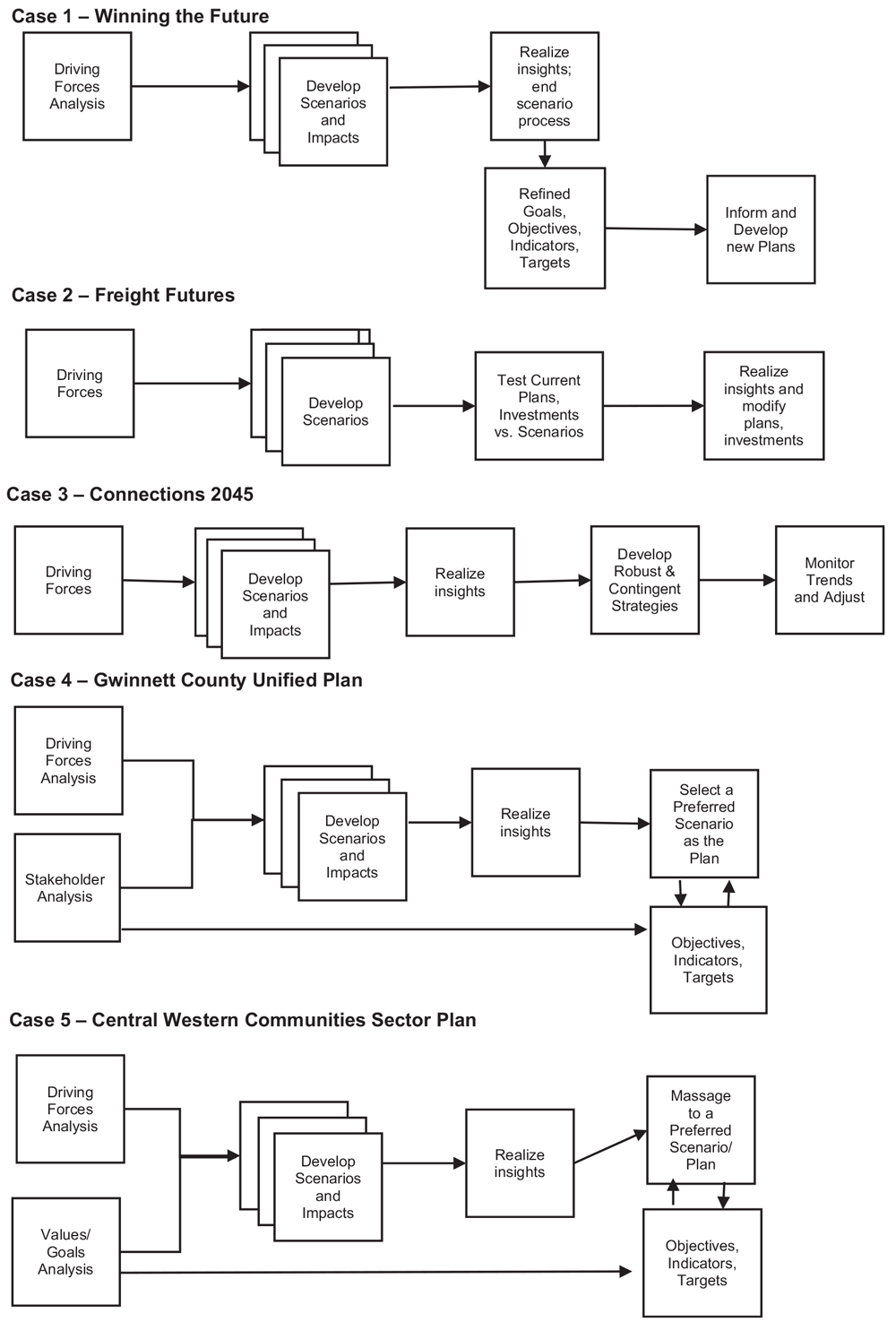Uncovering JAPA
Exploratory Scenario Planning for Uncertain Futures

Increasing uncertainty in many realms of the planning field is motivating practitioners to use new methods of exploratory planning scenarios. Using exploratory scenarios well requires planners to incorporate stakeholder values and not rely only on expert judgment and analysis.
This is the takeaway from Uri Avin and Robert Goodspeed's article "Using Exploratory Scenarios in Planning Practice" in the Journal of the American Planning Association (Vol. 86, No. 4).
Normative Scenario Planning
Until recently, planners have been accustomed to using normative scenario planning in their practice, which is a type of planning that focuses on creating a scenario that describes a desired future different from the current trend. This practice is well established in the United States and some European countries, where, for example, planners will use scenarios to define a preferred land use transportation plan, often at the regional scale.
Normative scenario planning is not perfect, as it tends to assume a large degree of control and influence to realize the desired plan. Often, these plans do not fully address uncertainties about how the future will unfold.
How Exploratory Scenario Planning Is Different
It's because of this that practitioners have begun using exploratory scenario planning. The authors describe this method of planning as one that creates several scenarios to reflect possible futures, even if those futures aren't deemed desirable by project stakeholders.
Using this type of scenario planning can prepare for uncertainties, taking into consideration such factors as the amount of economic growth, the effects of climate change, and the introduction of new technologies.
To investigate contemporary uses of exploratory scenario planning, Avin and Goodspeed document five case studies in five different locations throughout the U.S.:
- Atlanta
- the Philadelphia region
- Gwinnett County, Georgia
- Palm Beach County, Florida
- one nationwide plan
Each case used exploratory scenario planning to a different degree. Some cases did so as an independent learning exercise alongside the plan and some incorporated it within the structure of the overall plan itself.

Figure 1: Five case study scenario planning approaches.
The authors note that scenarios can be extremely beneficial because they better inform debates about addressing the future and uncover community priorities and values. The insights gleaned from the analysis can set the stage for identifying community goals and objectives, as well as prepare for developing a plan that responds to these goals and ultimately, the political process.
One of the case studies, the Gwinnett County Unified Plan, had a particularly unique and thorough approach. The plan fully documented all of the scenarios that were created (rather than simply moving them to the appendix) and retained two scenarios as equally worthy of consideration throughout the plan. But of particular interest is the fact that Gwinnett County leadership chose to not refine the scenario of a "regional shutdown" because they did not want to explore such a negative future.
Unfortunately, since the plan was completed in 2007 just before the housing bubble burst, this would have been the most relevant scenario to explore.
This particular situation is eye-opening when thinking about the impact of COVID-19 on urban planning efforts. It is indeed critical to consider scenarios related to extreme events such as economic shutdowns, public health crises, and climate emergencies. While we advance toward public health and safety, it is the responsibility of planners to account for the enduring effects or future waves of our global pandemic.
Top image: Getty Images photo.


